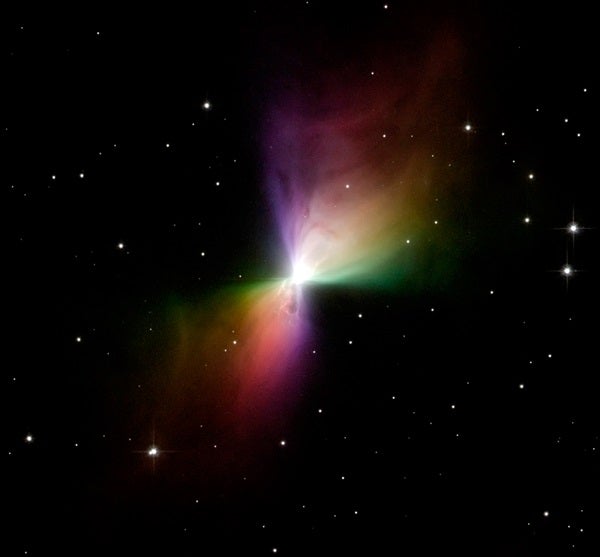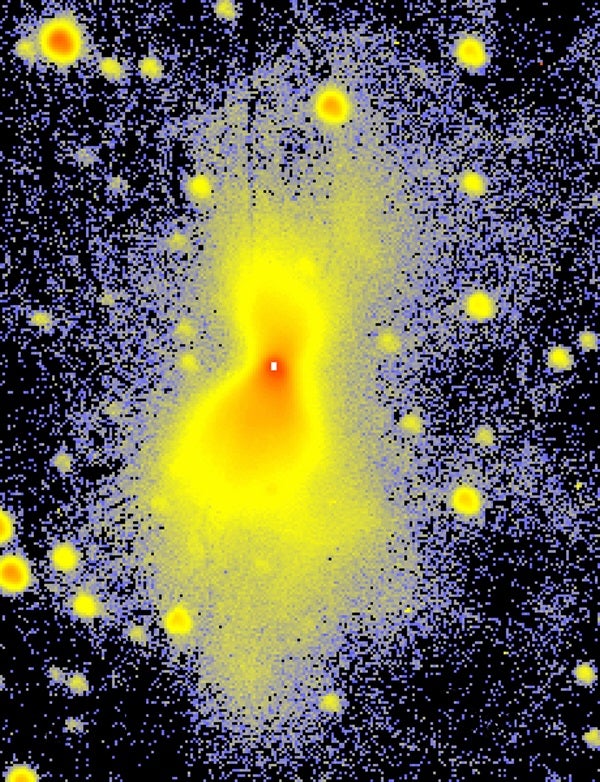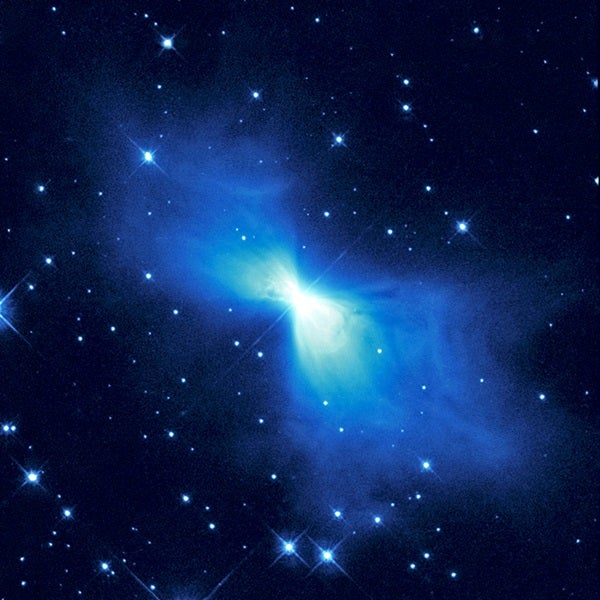The universe is a vast icebox punctuated by far-flung islands of unbearable heat. Places that could be considered comfortable — neither hot nor cold — are so rare as to be essentially nonexistent. Of course, we happily live on one such planet, the only example of true moderation in the entire known universe.
Not so long ago, space itself was thought to register absolute zero, the temperature at which all atomic jiggling terminates, except for some quantum effects. Because heat is simply the movement of atoms, the coldest anything can be is when all such motion has stopped. This happens at –459.67° Fahrenheit (–273.15° Celsius), or 0 kelvin, by definition.

Bringing the universe to your door. We’re excited to announce Astronomy magazine’s new Space and Beyond subscription box – a quarterly adventure, curated with an astronomy-themed collection in every box. Learn More >>.
Since the 1960s, we’ve known that a 5° temperature (Fahrenheit) bathes the universe, the leftover heat from the Big Bang, usually expressed as 2.73 K. This means some morsel of warmth remains absolutely everywhere. To achieve absolute cold, you would have to not merely isolate yourself from this all-pervasive cosmic microwave background (CMB) radiation, but also find a way to suck out every bit of remaining atomic motion. Earthly laboratories using clever processes have actually attained this sort of perfect cold (to within a billionth of a degree). The coldest artificial place in the known universe actually has an address: 77 Massachusetts Avenue, Building 26-243, Cambridge, Massachusetts. That’s Wolfgang Ketterle’s lab at MIT.
As for the coldest natural place in the universe, scientists have found that, too. It’s a location that, amazingly enough, manages to be chillier than space; a thermometer would read less than the 2.73 K temperature of the CMB. It’s the Boomerang Nebula.
When observing the Boomerang, we actually view the first stages of a planetary nebula. Ironically, such objects are usually extremely hot because their central star is typically fiercely blue (the hottest type of star); the surface temperature of this sun is 10 times that of our Sun and sends sizzling ultraviolet radiation spewing outward to excite the surrounding gases.
But the Boomerang Nebula is so young that it expels gas at a furious pace. This outrush not only blocks the cosmic microwaves that might otherwise warm it, but it also carries heat away. Even in normal terrestrial life, we see examples of how expanding gas has a chilling effect — discharging a can of whipped cream or tire-inflation gas makes that container feel colder in your hand.
Here in the constellation Centaurus, an impressive 5,000 light-years away, the newly minted planetary nebula expands so rapidly that the Boomerang has a temperature of only –458° F (–272° C), a mere 1° above absolute zero. This is the only known object whose temperature is naturally lower than the background radiation of the universe.
Astronomers using the 15-meter scope at the European Southern Observatory in Chile made this discovery in 1995. They would have liked to give it a better name, as “Boomerang” didn’t seem relevant either to the concept of cold or to the object’s appearance. The unfortunate-but-catchy label originated when astronomers Keith Taylor and Mike Scarrott observed the nebula 15 years earlier using a modest telescope in Australia. The pair only saw the brightest sections of its curving gases, and, being Australian, the aboriginal weapon was their Rorschach response.
In any case, the faint arcs and filaments streaking through and around the gas give the Boomerang an appearance different from other planetary nebulae, which often resemble doughnuts or giant bubbles, although they occasionally boast complex structures (see NGC 6543, the Cat’s Eye Nebula, which is number 22 on our 50 Weirdest list).
The best guess is that the Boomerang eventually will evolve and develop those same bubble-like structures. At the same time, its central star will undergo a dramatic metamorphosis. Presently, that ancient sun spews out at least 10 times more material yearly than normal for the early stages of a nascent planetary nebula. This “wind” blows at more than 300,000 mph (483,000 km/h), carrying the supercold gas away from the dying star in the middle. In time, this star should grow much hotter before it finally peaks, collapses, and settles into the ultimate white dwarf state that is the destiny of all planetary nebula progenitors. Then, the current extreme cold will be replaced by its exact opposite.
The Boomerang Nebula’s central star has lost an entire Sun’s worth of material just since A.D. 500 — an unsustainable mass-loss that will not endure much longer. For today’s observers, however, and only for right now, the resulting superfast nebula expansion is creating the ultimate Big Chill in the universe.












